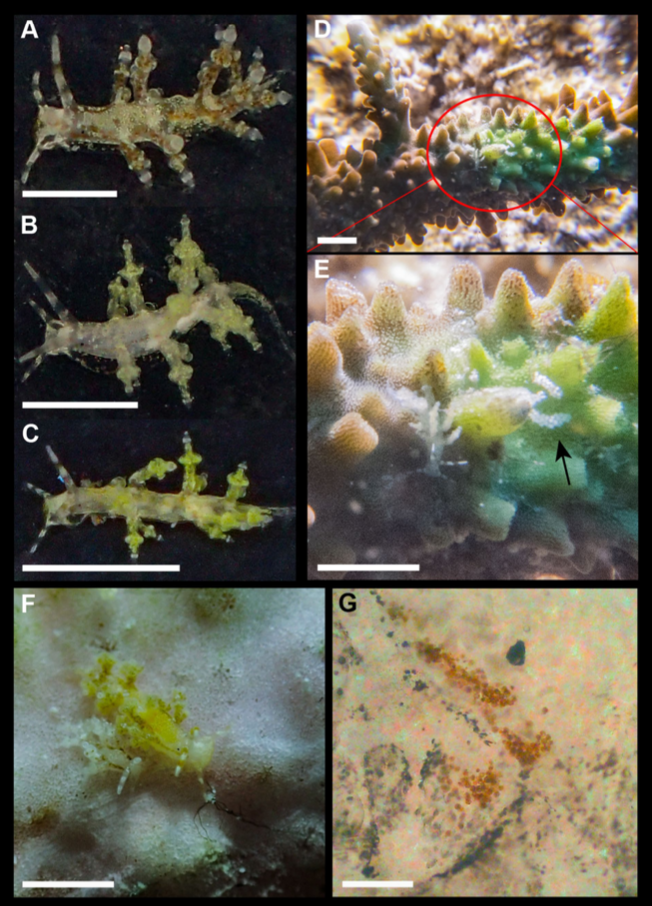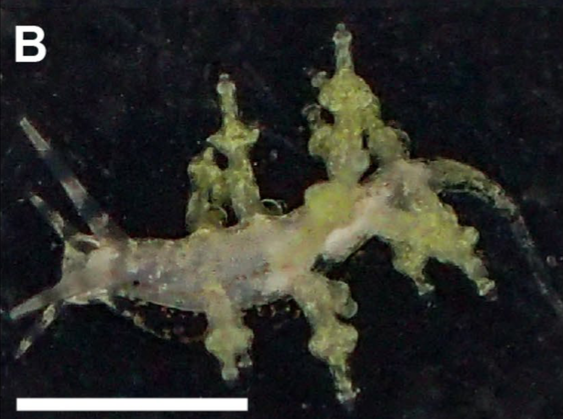Researchers surveying a coral reef in the Gulf of Thailand have found 13 species of coral-eating nudibranch, including one that’s totally new to science. The nudibranchs belong to the genus Phestilla – small, frilly, parasitic/predatory sea slugs which mimic the coral polyps they prey on, and they’re a reefkeeper’s worst nightmare.
At Koh Tao Island in Thailand, the critters were found to be dining on a range of hard coral genera including Dendrophyllia, Duncanopsammia, Turbinaria, Goniopora, Monitpora, Pavona, Porites, Rhizopsammia and Tubastrea. Cryptically colored to mimic and blend in with their hosts, each Phestilla species favors one coral species, and for the new species Phestilla arnoldi, (named after its discoverer Spencer Arnold,) Acropora muricata is its chosen host.
Acropora Eating Nudibranch
This makes it the first nudibranch proven to be associated with Acropora, but at the type location at Koh Tao, corals face other threats from Crown of Thorns Starfish, Drupella snails, disease, and bleaching, so the new nudibranch species may (just like its Acropora host,) also be threatened at that location. The authors say that the presence of the newly described nudi at other locations is likely. The discovery of one Acropora Eating Nudibranch species may lead to more. And just like Acropora Eating Flatworms or Montipora Eating Nudibranchs, Acropora Eating Nudibranchs may be something that the reefing community needs to look out for in the future.
Identification of adults
The Holotype for Phestilla arnoldi is 4mm long and “Body translucent white with opaque white to yellowish spots. Oral tentacles more than half the length of the rhinophores, both bearing two wide white bands. Snout covered by a characteristic opaque white rectangular patch. Anterior end of the foot rounded. Cerata arranged in rows, the first two separated from the posterior ones.”
Identification of eggs
“The spawn capsules are amorphous to oblate spheroid structures between 0.5 and 1 mm, containing 12–22 white to pale yellow eggs each. Capsules appear to be placed haphazardly on recently killed coral skeletons and rarely exceed 4 in number at any given time. Eggs highly cryptic on the white of coral skeletons.”

To read the full scientific paper go to https://doi.org/10.1007/s13199-023-00967-z



